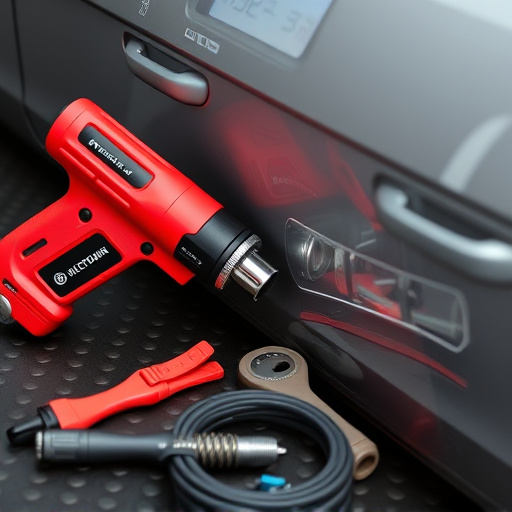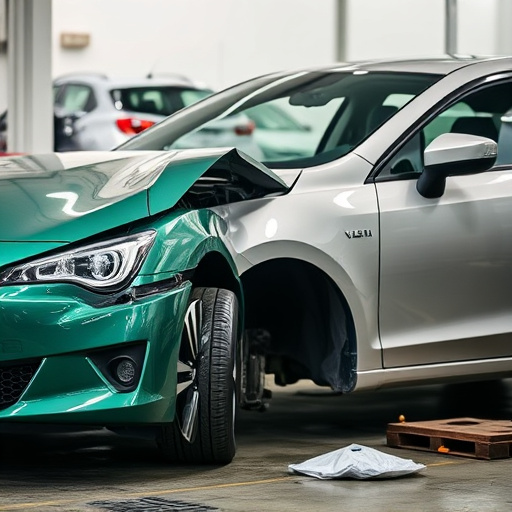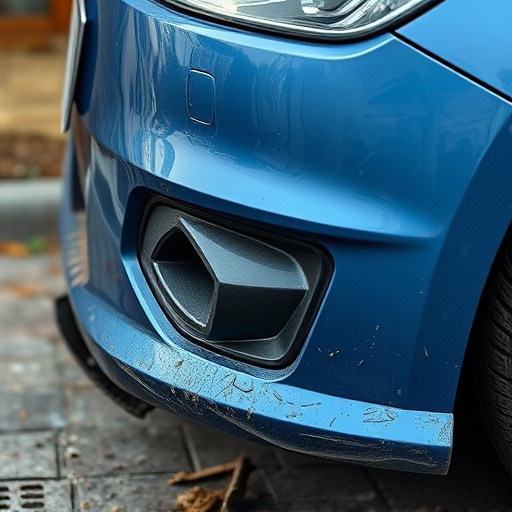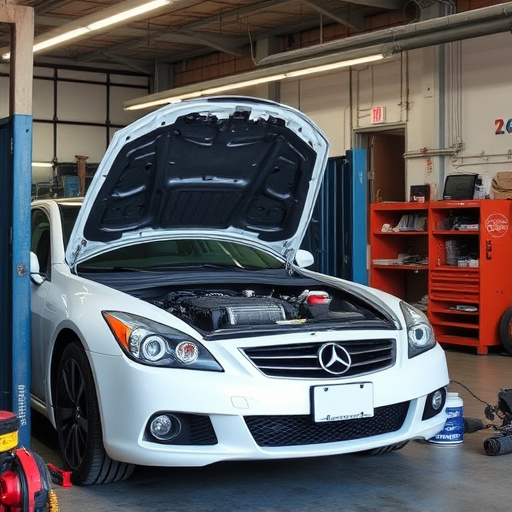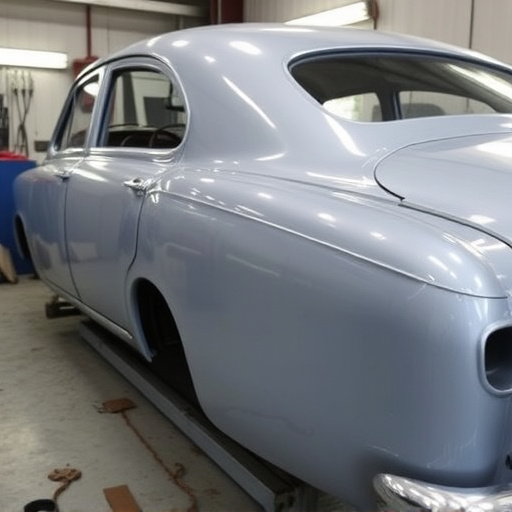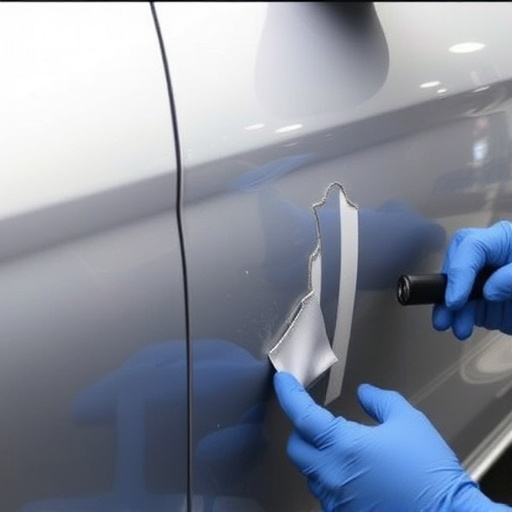The Mercedes PRE-SAFE system, an innovative active safety feature, enhances passive mechanisms like airbags and seatbelts by pretensioning belts, adjusting headrests, and even repairing paint damage before and during collisions. Regular checks post-service or airbag module repairs are crucial to ensure its life-saving functionality. A thorough Mercedes PRE-SAFE system check involves diagnostic tests for sensors, airbags, and seatbelt pretensioners, preventing critical malfunctions. Adhering to manufacturer recommendations ensures optimal safety and performance, with a step-by-step guide available for mechanics or car owners to conduct these checks effectively.
The Mercedes PRE-SAFE system is a cutting-edge passive safety feature designed to protect occupants in the event of a collision. After any airbag module service, a thorough system check becomes paramount. This crucial step ensures the PRE-SAFE system remains operational and ready to deploy effectively. Our article guides you through understanding this innovative technology, highlighting why post-service checks are essential, and providing a step-by-step process for conducting a comprehensive Mercedes PRE-SAFE system assessment.
- Understanding the Mercedes PRE-SAFE System and Its Functionality
- Why a System Check is Essential After Airbag Module Service
- Step-by-Step Guide: Conducting a Comprehensive PRE-SAFE System Check
Understanding the Mercedes PRE-SAFE System and Its Functionality
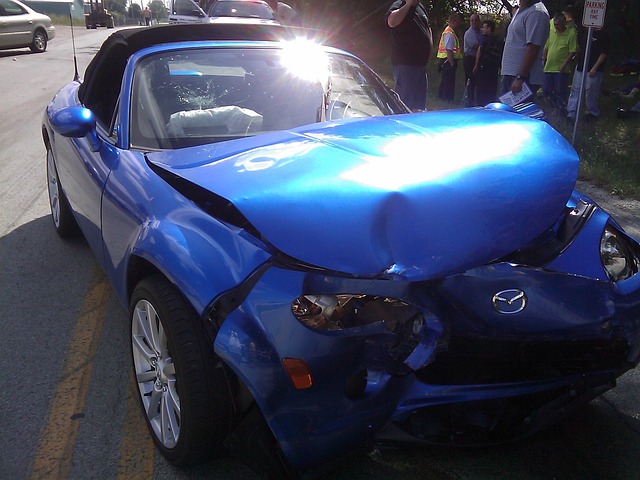
The Mercedes PRE-SAFE system is a revolutionary safety feature designed to protect occupants before and during a collision. It’s an active safety system that works in conjunction with airbags, seatbelts, and other passive safety mechanisms. When sensors detect a potential crash, the PRE-SAFE system swiftly initiates various measures to minimize the risk of injury. This includes pretensioning seatbelts, closing windows, and even moving seats to provide some distance between occupants and the impact zone.
This advanced technology goes beyond basic airbag deployment by preparing the car body for a collision. It can adjust headrest positions, brace doors, and in some cases, even activate vehicle paint repair mechanisms (a unique feature among luxury car brands) to reduce damage. A Mercedes PRE-SAFE system check is crucial after any service or repair, especially those involving the airbag module, to ensure this life-saving technology remains operational and ready for deployment when needed.
Why a System Check is Essential After Airbag Module Service

After undergoing an airbag module service, conducting a thorough Mercedes PRE-SAFE system check is paramount for ensuring the safety of all occupants in the vehicle. The PRE-SAFE system is designed to protect passengers by implementing various active and passive safety measures before, during, and after a collision. A system check verifies that each component—from sensors to control modules—is functioning optimally, allowing for swift deployment of airbags and other safety features if needed.
This process goes beyond simply inspecting visual damage to the car’s bodywork services; it involves diagnostic tests that assess the overall health of the entire PRE-SAFE network, including the automotive repair necessary for proper airbag inflation and seatbelt pretensioners. A missed or neglected check could result in life-threatening malfunctions during an accident, underscoring the importance of adhering to manufacturer recommendations for post-service inspections.
Step-by-Step Guide: Conducting a Comprehensive PRE-SAFE System Check

Conducting a comprehensive Mercedes PRE-SAFE system check is crucial to ensure optimal vehicle safety and performance. Here’s a step-by-step guide for mechanics or car owners to navigate this process effectively:
1. Power On and Initiate Check: Start by powering on the vehicle and allowing all systems to boot up fully. Then, access the PRE-SAFE system through the onboard diagnostics interface. This is often located in the vehicle’s control center or may require a specific diagnostic tool.
2. Inspect Sensor Functionality: The first step involves verifying that all sensors are functioning correctly. These sensors play a vital role in detecting sudden changes, such as rapid deceleration or impact, which trigger the PRE-SAFE system. Check for any errors or anomalies reported by the sensors and address them promptly, if needed.
3. Verify Airbag Module Status: Next, focus on the airbag module. This critical component is responsible for deploying airbags in an accident. Ensure that the module is properly integrated into the vehicle’s safety network and that its status reads as active and ready. Any issues, such as damage or a faulty connection, should be addressed by a qualified auto body painting or bodywork services professional to ensure safe repair.
4. Simulate Emergency Conditions: To thoroughly test the PRE-SAFE system, simulate emergency scenarios. This can involve accelerating suddenly or applying sharp brakes to observe how the sensors respond and whether the system engages as designed.
5. Check Pre-Safe System Status: After each simulation, review the system’s status. The PRE-SAFE system should initiate its safety protocols if triggered appropriately. Verify that all components, including seatbelt pretensioners, lateral airbags, and head restraints, operate correctly when engaged.
6. Document Findings: Throughout the check, meticulously document any observations, test results, and potential issues discovered. This detailed record will be valuable for future reference and can aid in identifying patterns or recurring problems specific to that particular vehicle model.
After servicing your Mercedes Airbag Module, it’s crucial to perform a thorough Mercedes PRE-SAFE system check. This ensures the safety and reliability of this vital system, designed to protect occupants in the event of a collision. By following a comprehensive step-by-step guide, you can confidently verify the PRE-SAFE system’s functionality, giving you peace of mind on the road.



